GQRX and Gpredict completed link
Frequency Automatic Tracking on LINUX

[GQRX ⇔ Gpredict completed collaboration !]
GQRX did not work just by writing the address of localhost in "Allowed hosts", so
after setting ::ffff: to the beginning of the line i.e. setting "::ffff:127.0.0.1",
the display frequency on Gpredict was continuously reflected to GQRX.
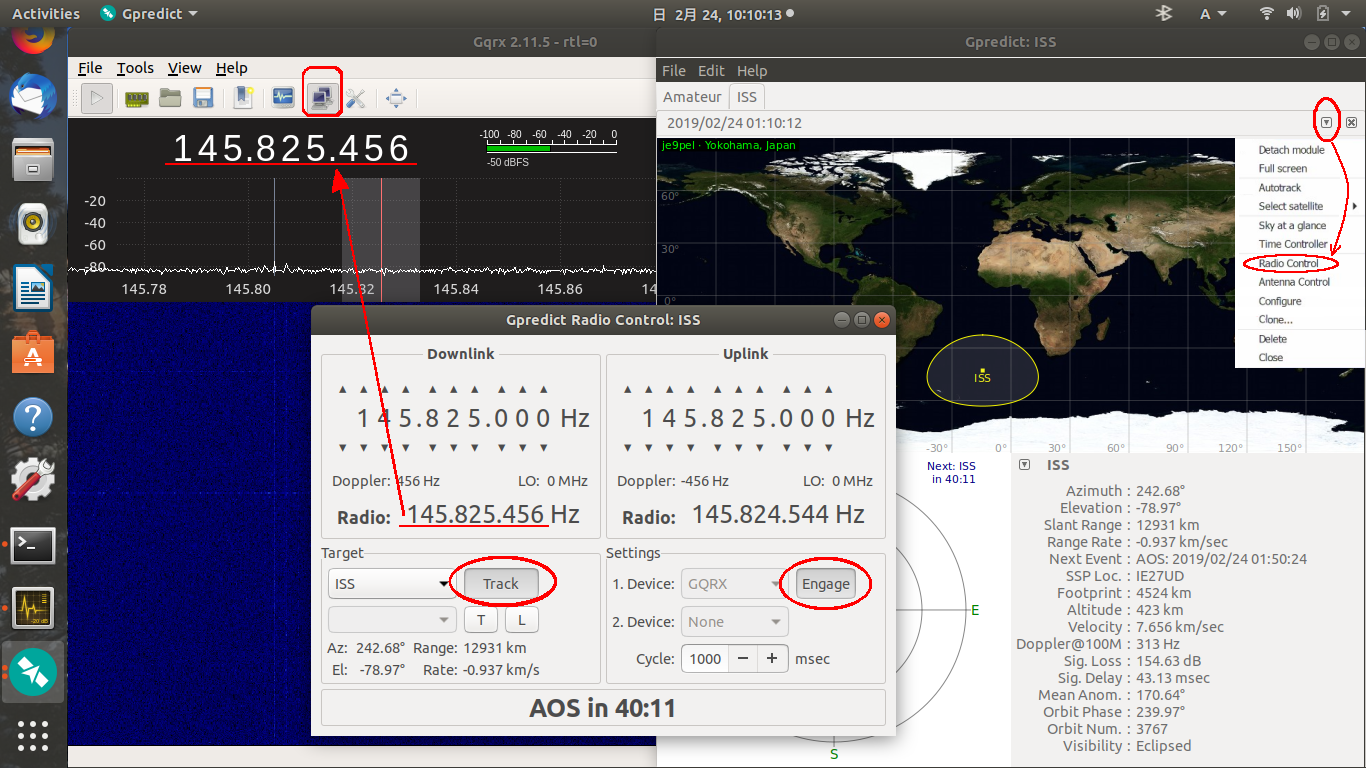

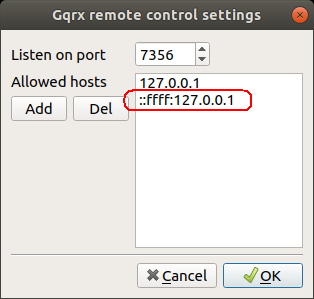 [NOAA-15 using GQRX+Gpredict+WXtoImg on LINUX]
Completely hands-free realized on LINUX. I am happy.
Several software such as Settings+PulseAudio+GQRX+Gpredict+WXtoImg are running.
When receiving other satellites, the many software such as wine+Soundmodem+AgwOnlineKiss+TlmForwader
are added and worked at the same time. My next challenge is to receive the signal on LINUX_GNURadio.
This seems to be possible soon, but it looks difficult.
[NOAA-15 using GQRX+Gpredict+WXtoImg on LINUX]
Completely hands-free realized on LINUX. I am happy.
Several software such as Settings+PulseAudio+GQRX+Gpredict+WXtoImg are running.
When receiving other satellites, the many software such as wine+Soundmodem+AgwOnlineKiss+TlmForwader
are added and worked at the same time. My next challenge is to receive the signal on LINUX_GNURadio.
This seems to be possible soon, but it looks difficult.
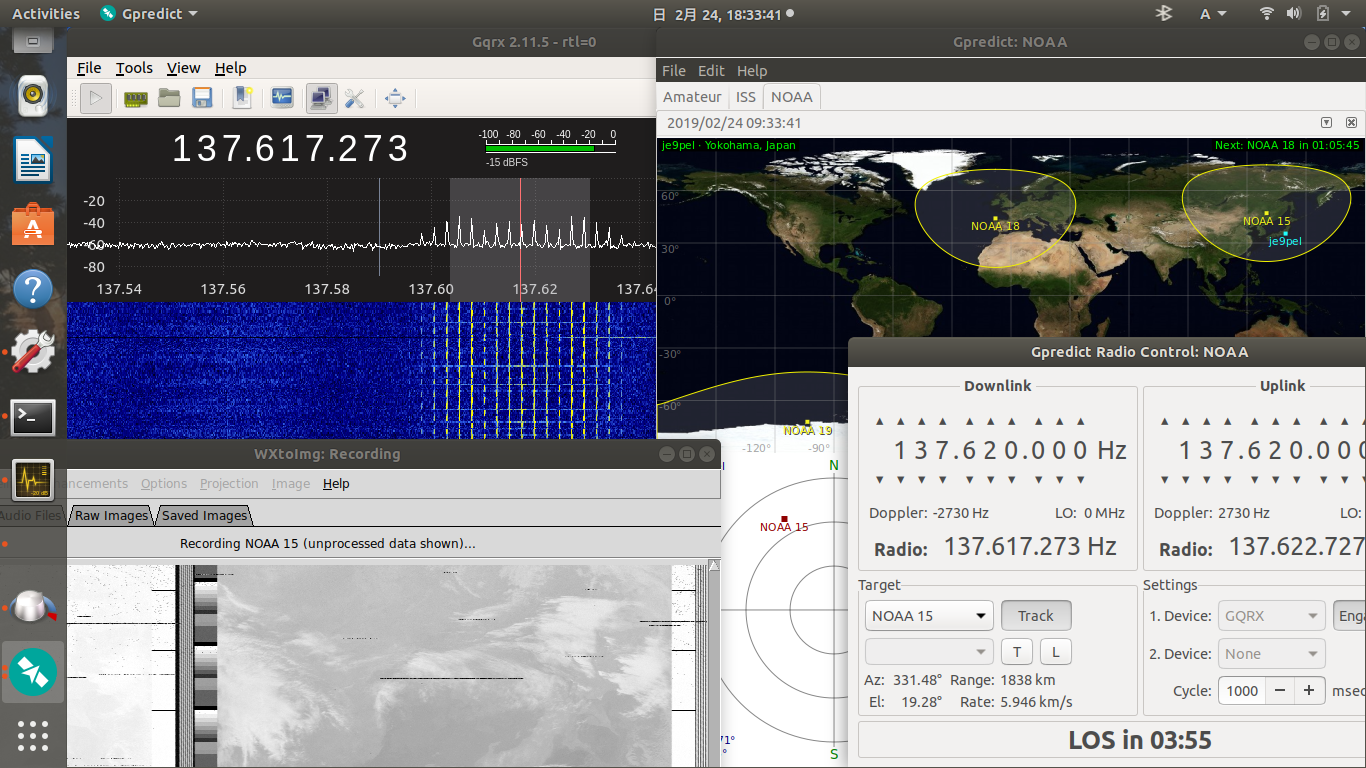 http://wakky.asablo.jp/blog/2019/02/20/
[DTUsat-2 using GQRX+Gpredict on LINUX]
I received 2.4 GHz signal from DTUsat-2 satellite such as GQRX+Gpredict by hands-free.
It accurately reflects Doppler shift. When you replay the recorded file on GQRX by Spectran,
the trace of the signal is drawn horizontally and you can barely read the satellite callsign.
http://wakky.asablo.jp/blog/2019/02/20/
[DTUsat-2 using GQRX+Gpredict on LINUX]
I received 2.4 GHz signal from DTUsat-2 satellite such as GQRX+Gpredict by hands-free.
It accurately reflects Doppler shift. When you replay the recorded file on GQRX by Spectran,
the trace of the signal is drawn horizontally and you can barely read the satellite callsign.
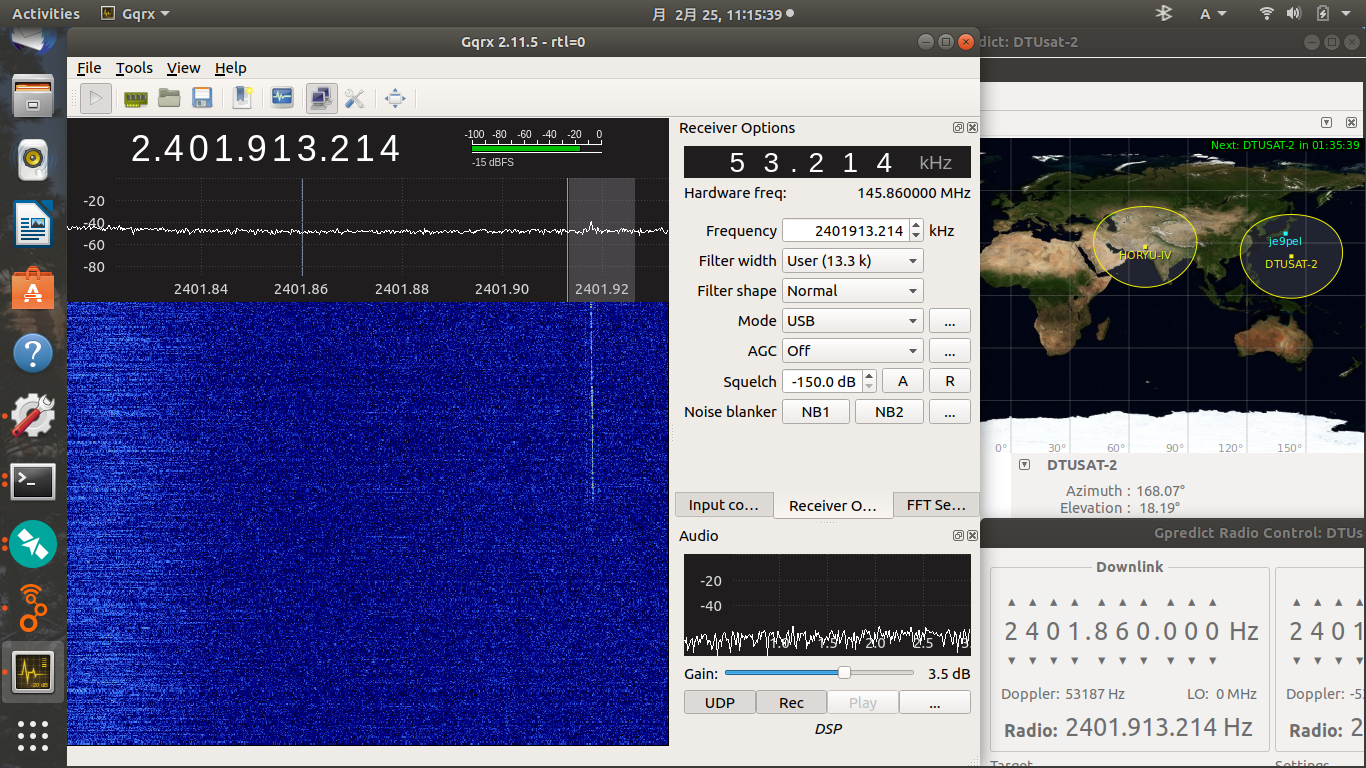
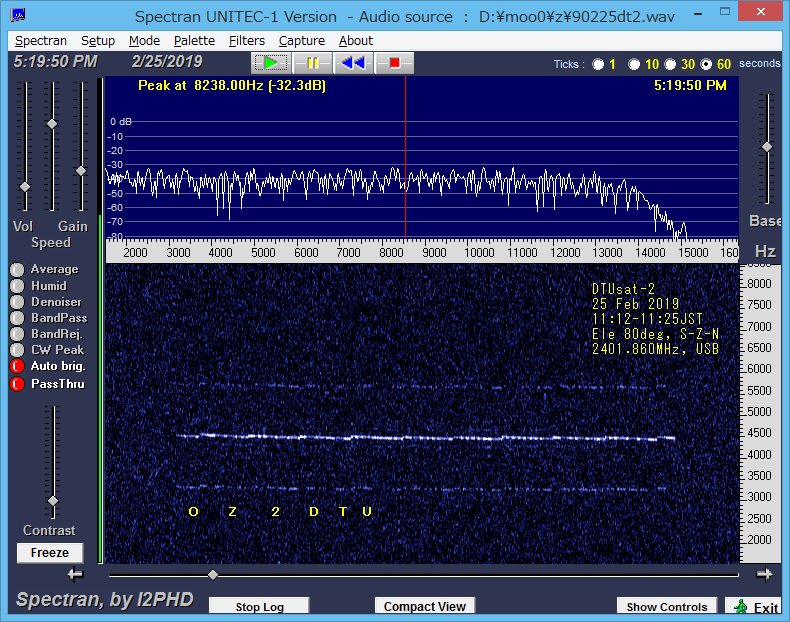 http://dl.dropbox.com/s/yiylhpy6rskwe56/90225dt2.wav
[Gpredict TLE Update]
I showed the hidden files like Dock -> Files -> Header bar -> ... -> Check "Show Hidden Files".
TLE update in Gpredict is correctly done by "Edit -> Update TLE from net", but
"Preferences -> TLE Update -> Update from the Internet -> TLE sources" is not visualized
when specifying NET destination, so I tried to update it by directly editing NET destination
in .config of a hidden folder.
1. Home -> .config -> Gpredict -> Delete all files in satdata folder
2. Home -> .config -> Gpredict -> gpredict.cfg -> [TLE] -> Rewrite URLS
3. Restart Gpredict -> Edit -> "Update TLE from net"
4. Home -> .config -> Gpredict -> satdata can be edited.
5. Home -> .config -> Gpredict -> gpredict.cfg -> OPEN_MODULES can be edited.
6. It's possible to omit 1. 2. at the next startup.
The separation between URLS in 2. is a semicolon (;).
http://wakky.asablo.jp/blog/2025/06/13/9782250
http://dl.dropbox.com/s/yiylhpy6rskwe56/90225dt2.wav
[Gpredict TLE Update]
I showed the hidden files like Dock -> Files -> Header bar -> ... -> Check "Show Hidden Files".
TLE update in Gpredict is correctly done by "Edit -> Update TLE from net", but
"Preferences -> TLE Update -> Update from the Internet -> TLE sources" is not visualized
when specifying NET destination, so I tried to update it by directly editing NET destination
in .config of a hidden folder.
1. Home -> .config -> Gpredict -> Delete all files in satdata folder
2. Home -> .config -> Gpredict -> gpredict.cfg -> [TLE] -> Rewrite URLS
3. Restart Gpredict -> Edit -> "Update TLE from net"
4. Home -> .config -> Gpredict -> satdata can be edited.
5. Home -> .config -> Gpredict -> gpredict.cfg -> OPEN_MODULES can be edited.
6. It's possible to omit 1. 2. at the next startup.
The separation between URLS in 2. is a semicolon (;).
http://wakky.asablo.jp/blog/2025/06/13/9782250
 Back to Top
Back to Top
 Back to Home Page
Back to Home Page




[NOAA-15 using GQRX+Gpredict+WXtoImg on LINUX] Completely hands-free realized on LINUX. I am happy. Several software such as Settings+PulseAudio+GQRX+Gpredict+WXtoImg are running. When receiving other satellites, the many software such as wine+Soundmodem+AgwOnlineKiss+TlmForwader are added and worked at the same time. My next challenge is to receive the signal on LINUX_GNURadio. This seems to be possible soon, but it looks difficult.
http://wakky.asablo.jp/blog/2019/02/20/ [DTUsat-2 using GQRX+Gpredict on LINUX] I received 2.4 GHz signal from DTUsat-2 satellite such as GQRX+Gpredict by hands-free. It accurately reflects Doppler shift. When you replay the recorded file on GQRX by Spectran, the trace of the signal is drawn horizontally and you can barely read the satellite callsign.

http://dl.dropbox.com/s/yiylhpy6rskwe56/90225dt2.wav [Gpredict TLE Update] I showed the hidden files like Dock -> Files -> Header bar -> ... -> Check "Show Hidden Files". TLE update in Gpredict is correctly done by "Edit -> Update TLE from net", but "Preferences -> TLE Update -> Update from the Internet -> TLE sources" is not visualized when specifying NET destination, so I tried to update it by directly editing NET destination in .config of a hidden folder. 1. Home -> .config -> Gpredict -> Delete all files in satdata folder 2. Home -> .config -> Gpredict -> gpredict.cfg -> [TLE] -> Rewrite URLS 3. Restart Gpredict -> Edit -> "Update TLE from net" 4. Home -> .config -> Gpredict -> satdata can be edited. 5. Home -> .config -> Gpredict -> gpredict.cfg -> OPEN_MODULES can be edited. 6. It's possible to omit 1. 2. at the next startup. The separation between URLS in 2. is a semicolon (;). http://wakky.asablo.jp/blog/2025/06/13/9782250